Photovoltaic and Thermoelectric Generator Combined Hybrid Energy System with an Enhanced Maximum Power Point Tracking Technique for Higher Energy Conversion Efficiency
Abstract
1. Introduction
2. Modeling and Analysis of the PV and TEG
2.1. The PV Cell Modeling
2.2. Modeling of the TEG
3. The Hybrid PV–TEG Energy Module
3.1. Integration of PV with TEG
3.2. Performance Analysis of PV–TEG
4. The Proposed FOFLC-Based MPPT Control Technique
5. Implementation of the Proposed System
5.1. The Hybrid PV–TEG System
5.2. Implementation of the FOFLC-Based MPPT Algorithm
6. Analysis of Results and Discussion
6.1. Hybrid PV–TEG System without Battery Storage
6.2. Hybrid PV–TEG System with Added Battery Storage
7. Conclusions
Funding
Institutional Review Board Statement
Informed Consent Statement
Conflicts of Interest
References
- Babu, C.; Ponnambalam, P. The theoretical performance evaluation of hybrid PV-TEG system. Energy Convers. Manag. 2018, 173, 450–460. [Google Scholar] [CrossRef]
- Attivissimo, F.; Di Nisio, A.; Lanzolla, A.M.L.; Paul, M. Feasibility of a photovoltaic thermoelectric generator: Performance analysis and simulation results. IEEE Trans. Instrum. Meas. 2015, 64, 1158–1169. [Google Scholar] [CrossRef]
- Hasanuzzaman, M.; Malek, A.B.M.A.; Islam, M.M.; Pandey, A.K.; Rahim, N.A. Global advancement of cooling technologies for PV systems: A review. Sol. Energy 2016, 137, 25–45. [Google Scholar] [CrossRef]
- Ahmet, S.; Kehinde, I.; Bekir, Y.; Abdullah, S. A review on the performance of photovoltaic/thermoelectric hybrid generators. Int. J. Energy Res. 2020, 44, 3365–3394. [Google Scholar]
- Meng, J.H.; Zhang, X.X.; Wang, X.D. Characteristics analysis and parametric study of a thermoelectric generator by considering variable material properties and heat losses. Int. J. Heat Mass Transf. 2015, 80, 227–235. [Google Scholar] [CrossRef]
- Laird, I.; Lu, D. High step-up DC/DC topology and MPPT algorithm for use with a thermoelectric generator. IEEE Trans. Power Electron. 2013, 28, 3147–3157. [Google Scholar] [CrossRef]
- Hsiao, Y.Y.; Chang, W.C.; Chen, S.L. A Mathematic Model of Thermoelectric Module with Applications on Waste Heat Recovery from Automobile Engine. Energy 2010, 35, 1447–1454. [Google Scholar] [CrossRef]
- McEnaney, K.; Kraemer, D.; Ren, Z.; Chen, G. Modeling of Concentrating Solar Thermoelectric Generators. J. Appl. Phys. 2011, 110, 074502. [Google Scholar] [CrossRef]
- Kumar, S.; Heister, S.D.; Xu, X.; Salvador, J.R.; Meisenr, G.P. Thermoelectric generators for automotive waste heat recovery systems. Part I: Numerical modeling and baseline model analysis. J. Electron. Mater. 2013, 42, 665–674. [Google Scholar] [CrossRef]
- Wang, P.; Wang, B.L.; Li, J.E. Temperature and performance modeling of thermoelectric generators. Int. J. Heat Mass Transf. 2019, 143, 1145–1153. [Google Scholar] [CrossRef]
- Kanagaraj, N.; Rezk, H.; Gomaa Behiri, M.R. A variable fractional order fuzzy logic control based MPPT technique for improving energy conversion efficiency of thermoelectric power generator. Energies 2020, 13, 4531. [Google Scholar] [CrossRef]
- Lin, J.; Liao, T.; Lin, B. Performance analysis and load matching of a photovoltaic-thermoelectric hybrid system. Energy Convers. Manag. 2015, 105, 891–899. [Google Scholar] [CrossRef]
- Ibrahim, N.M.; Rezk, H.; Dahifallah, M.A.; Sergeant, P. Hybrid photovoltaic-thermoelectric generator powered synchronous reluctance motor for pumping applications. IEEE Access 2019, 7, 146979–146988. [Google Scholar] [CrossRef]
- Mohd Shatar, N.; Abdul Rahman, M.A.; Muhtazaruddin, M.N.; Shaikh Salim, S.A.Z.; Singh, B.; Muhammad-Sukki, F.; Bani, N.A.; Saudi, A.S.M.; Ardila-Rey, J.A. Performance evaluation of unconcentrated photovoltaic-thermoelectric generator hybrid system under tropical climate. Sustainability 2019, 11, 6192. [Google Scholar] [CrossRef]
- Verma, V.; Kane, A.; Singh, B. Complementary performance enhancement of PV energy system through thermoelectric generation. Renew. Sustain. Energy Rev. 2016, 58, 1017–1026. [Google Scholar] [CrossRef]
- Lin, C.H.; Huang, C.H.; Du, Y.C.; Chen, J.L. Maximum photovoltaic power tracking for the PV array using the fractional-order incremental conductance method. Appl. Energy 2011, 88, 4840–4847. [Google Scholar] [CrossRef]
- Nzoundja, F.C.B.; Patrice, W.; Martin, K.; Abderrezak, B.; Hyacinthe, T. Real-time experimental assessment of hill climbing algorithm enhanced by estimating a duty cycle for PV system. Int. J. Renew. Energy Res. 2019, 9, 1180–1189. [Google Scholar]
- Fuqiang, C.; Yu, G.; Xiaohong, G.; Xian, Y.; Liangwei, F.; Lin, S.; Xing, H.; Kun, Z.Z.; Chao, W.; Weitao, Z. Fabrication of nanostructured skutterudite-based thermoelectric module and design of a maximum power point tracking system for the thermoelectric pile. IEEE Sens. J. 2019, 19, 5885–5894. [Google Scholar]
- Subudhi, B.; Pradhan, R. A comparative study on maximum power point tracking techniques for photovoltaic power systems. IEEE Trans. Sustain. Energy 2013, 4, 89–98. [Google Scholar] [CrossRef]
- Serhat, D.; Nuran, Y.; Ismail, A. A novel MPPT algorithm based on optimized artificial neural network by using FPSOGSA for standalone photovoltaic energy systems. Neural Comput. Appl. 2018, 29, 257–278. [Google Scholar]
- Junaid, K.M.; Lini, M. Fuzzy logic controller-based MPPT for hybrid photo-voltaic/wind/fuel cell power system. Neural Comput. Appl. 2019, 31, 6331–6344. [Google Scholar]
- Montecucco, A.; Knox, A.R. Maximum power point tracking converter based on the open-circuit voltage method for thermoelectric generators. IEEE Trans. Power Electron. 2015, 30, 828–839. [Google Scholar] [CrossRef]
- Bijukumar, A.; Raam, A.G.K.; Ganesan, S.I.; Nagamani, C. A linear extrapolation-based MPPT algorithm for thermoelectric generators under dynamically varying temperature conditions. IEEE Trans. Energy Convers. 2018, 33, 1641–1649. [Google Scholar] [CrossRef]
- Kim, J.; Kim, C. A DC–DC boost converter with variation-tolerant MPPT technique and efficient ZCS circuit for thermoelectric energy harvesting applications. IEEE Trans. Power Electron. 2012, 28, 3827–3833. [Google Scholar] [CrossRef]
- Rezania, A.; Sera, D.; Rosendahl, L.A. Coupled thermal model of photovoltaic-thermoelectric hybrid panel for sample cities in Europe. Renew. Energy 2016, 99, 127–135. [Google Scholar] [CrossRef]
- Qing, S.; Rezania, A.; Rosendahl, L.A.; Gou, X. An analytical model for performance optimization of thermoelectric generator with temperature dependent materials. IEEE Access 2018, 6, 60852–60861. [Google Scholar] [CrossRef]
- Chen, M.; Rosendahl, L.A.; Condra, T. A three-dimensional numerical model of thermoelectric generators in fluid power systems. Int. J. Heat Mass Transf. 2011, 54, 345–355. [Google Scholar] [CrossRef]
- Kanagaraj, N. Design and performance evaluation of fuzzy variable fractional-order [PI]λDμ controller for a class of first-order delay-time systems. Stud. Inform. Control 2019, 28, 443–452. [Google Scholar] [CrossRef]
- Tang, S.; Sun, Y.; Chen, Y.; Zhao, Y.; Yang, Y.; Szeto, W. An enhanced MPPT method combining fractional-order and fuzzy logic control. IEEE J. Photovolt. 2017, 7, 640–650. [Google Scholar] [CrossRef]
- Yu, K.N.; Liao, C.K.; Yau, H.T. A new fractional-order based intelligent maximum power point tracking control algorithm for photovoltaic power systems. Int. J. Photoenergy 2015, 2015, 493452. [Google Scholar] [CrossRef]
- Ullah, N.; Nisar, F.; Alahmadi, A.A. Closed Loop Control of Photo Voltaic Emulator Using Fractional Calculus. IEEE Access 2020, 8, 28880–28887. [Google Scholar] [CrossRef]
- Rashid, M.H. Power Electronics Circuits, Devices and Applications, 2nd ed.; Prentice-Hall of India Private Ltd.: New Delhi, India, 2003. [Google Scholar]
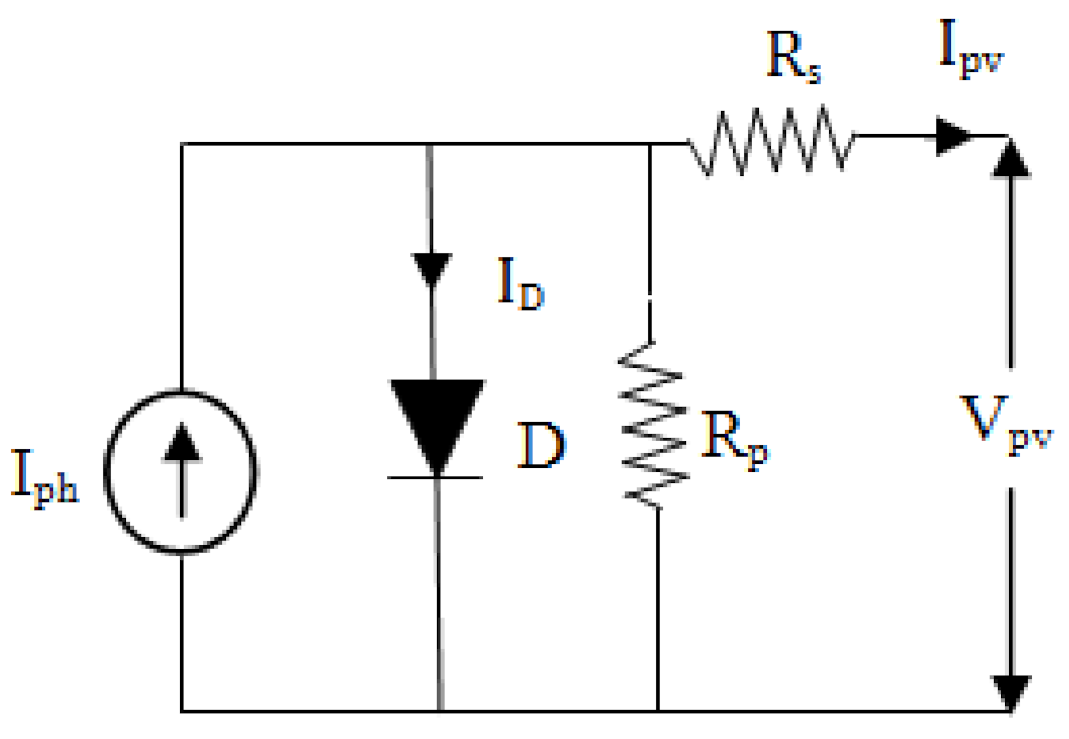
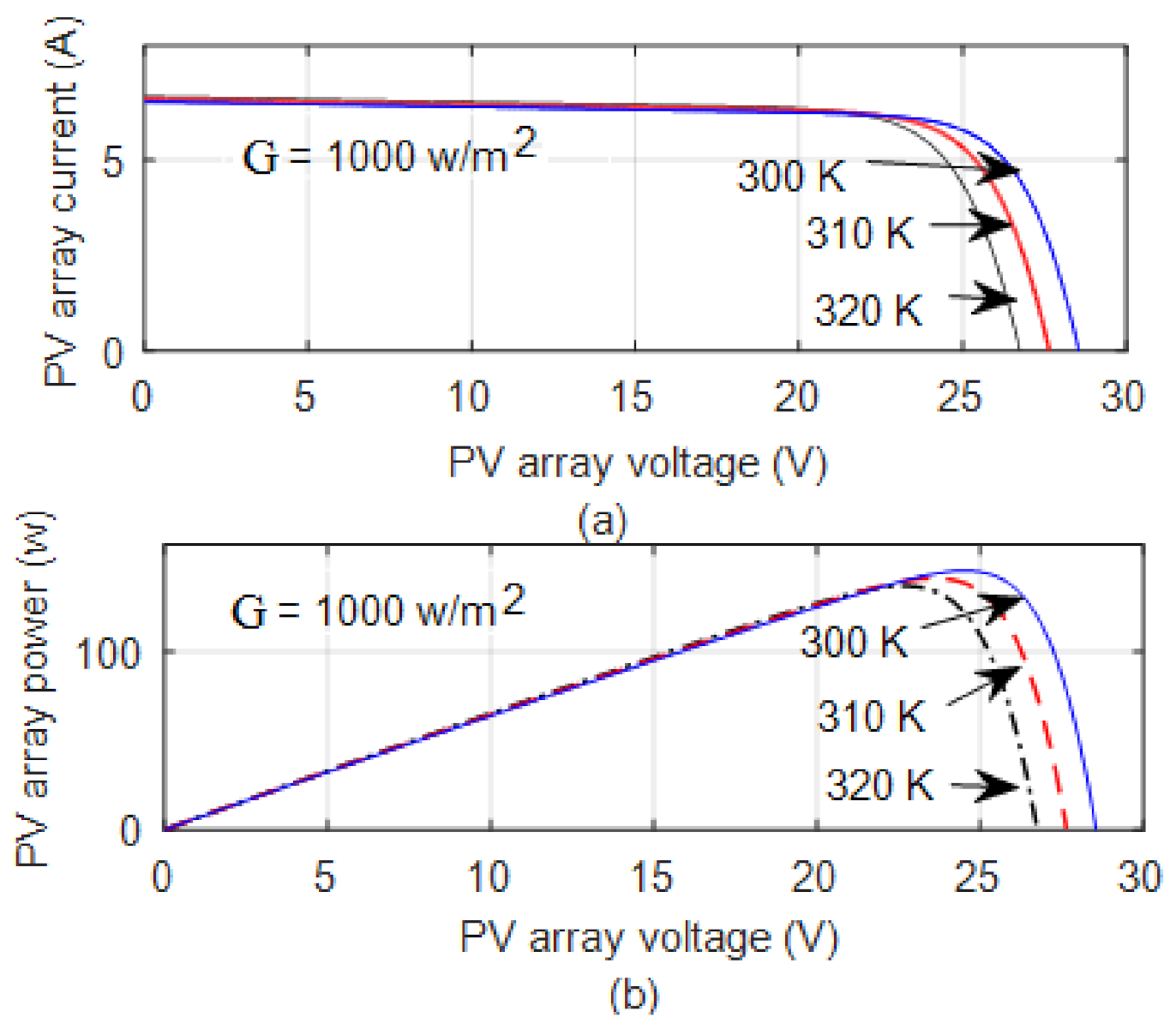

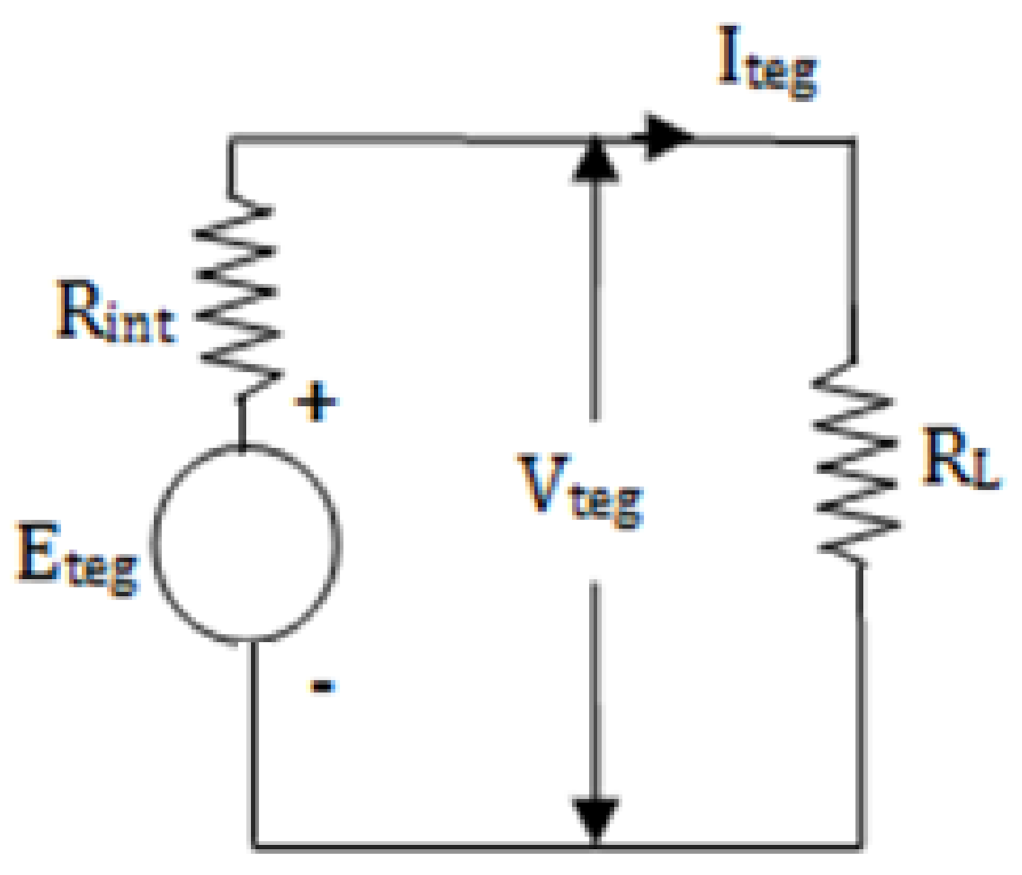
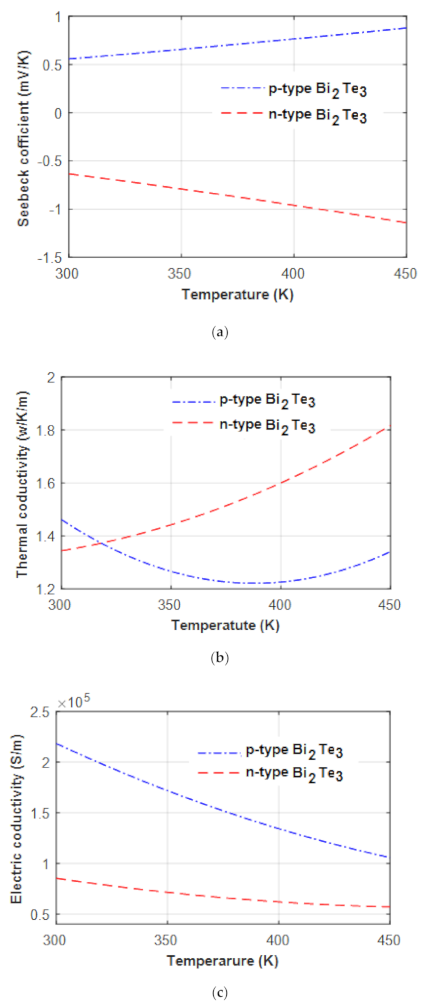
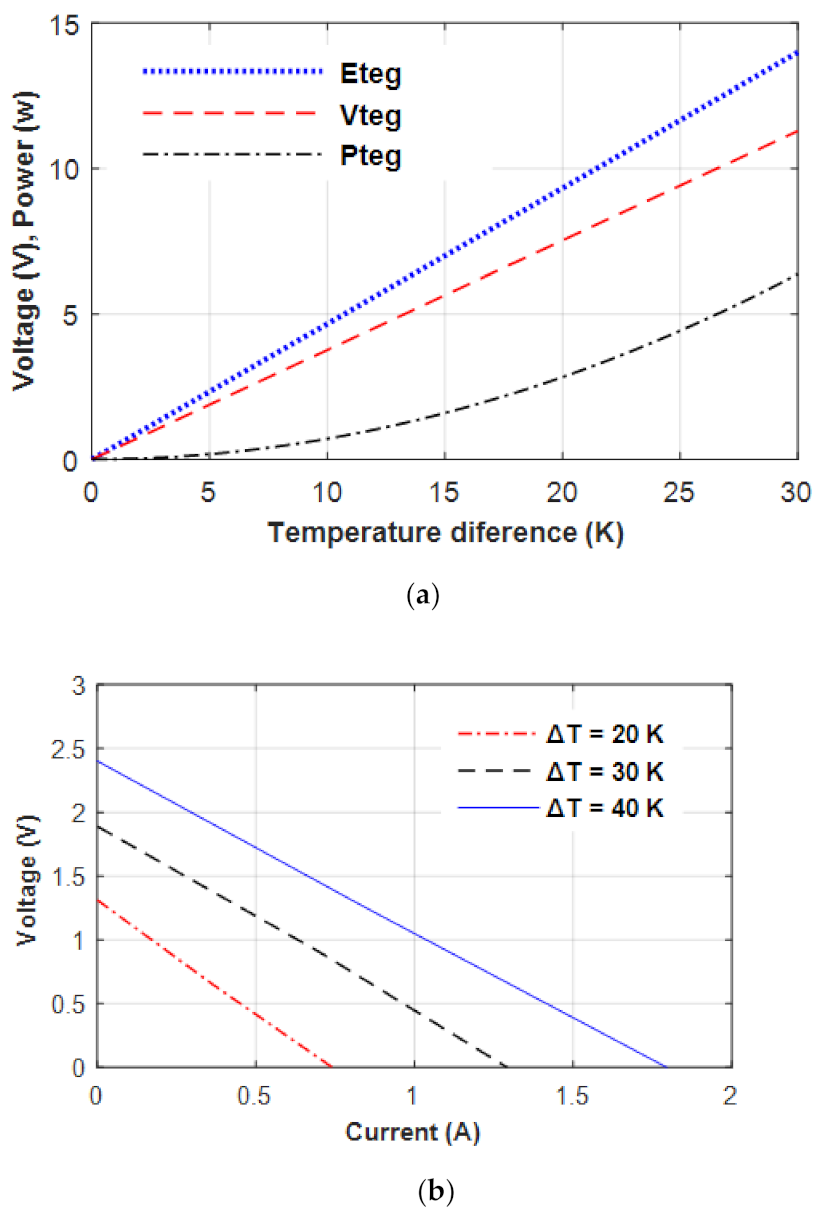
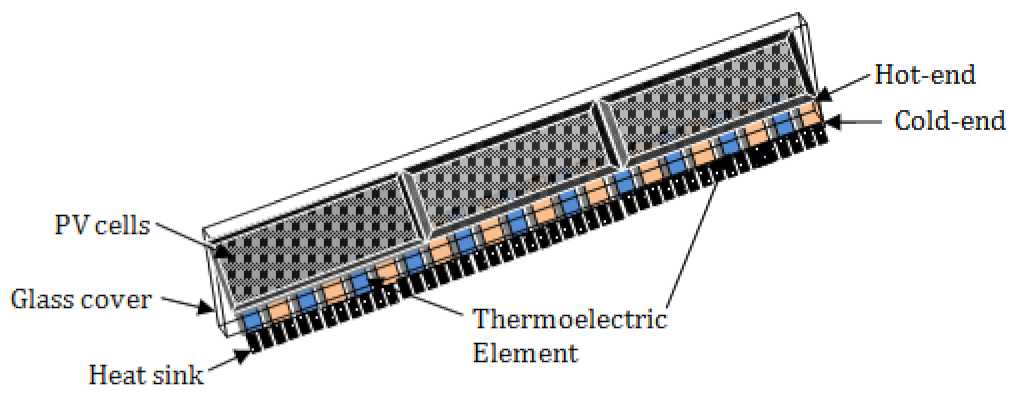
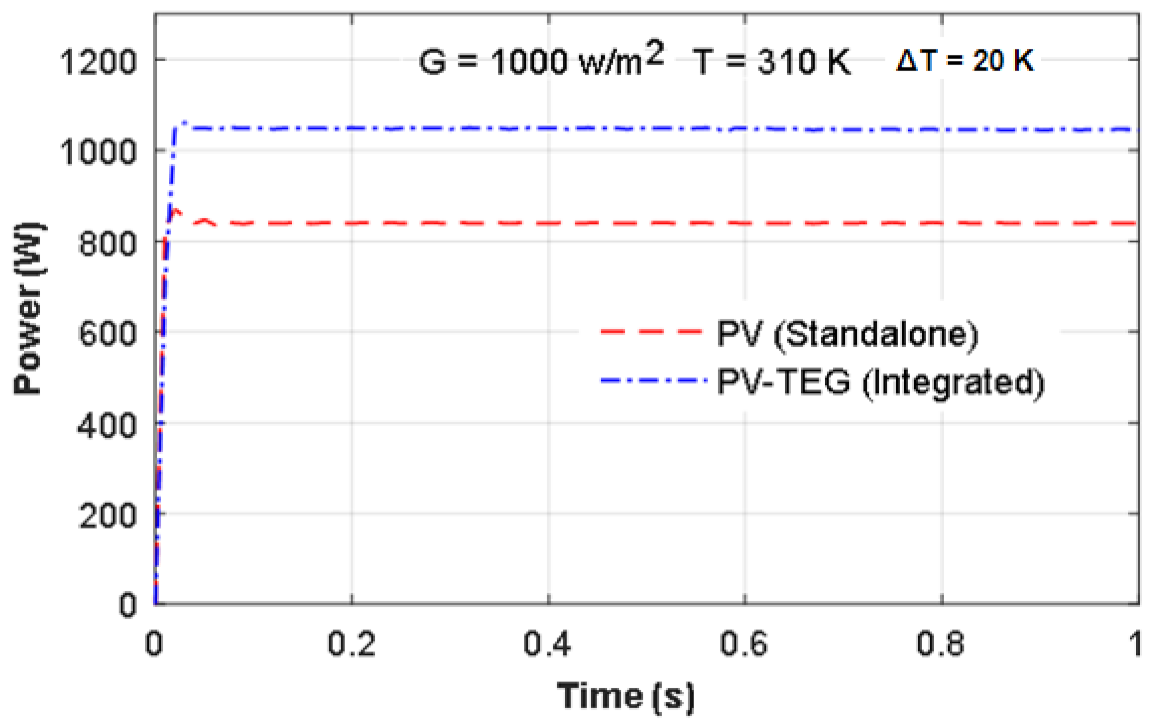
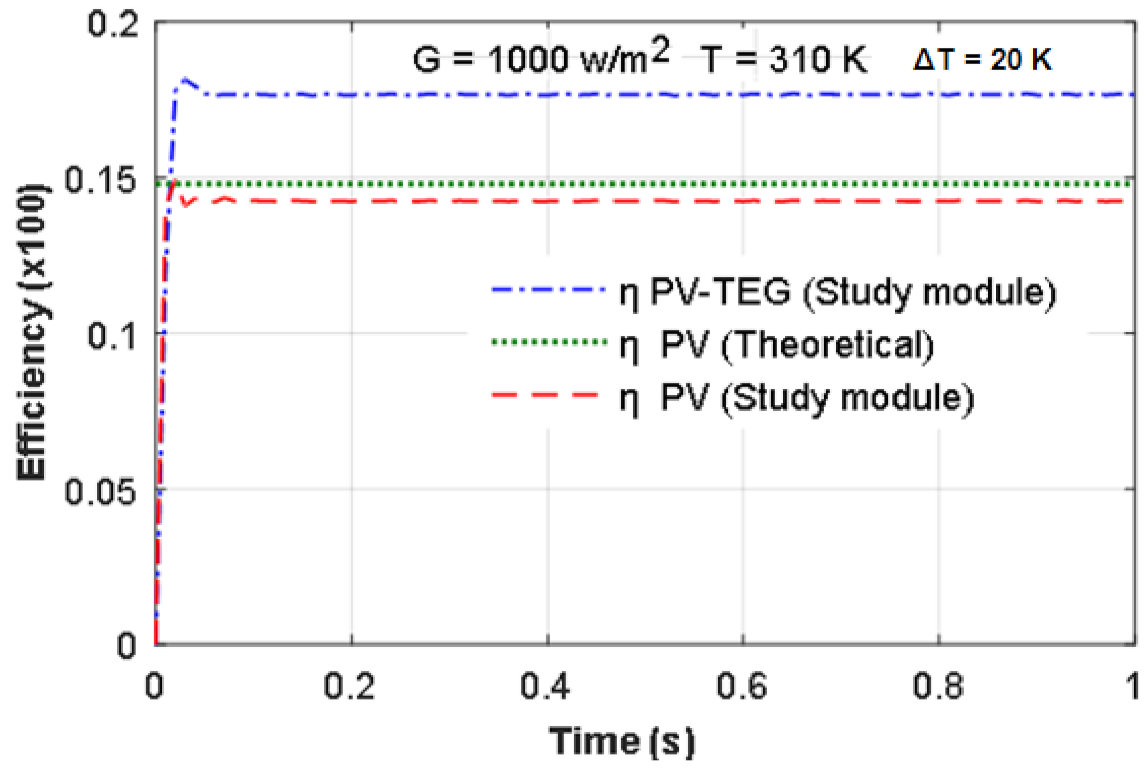

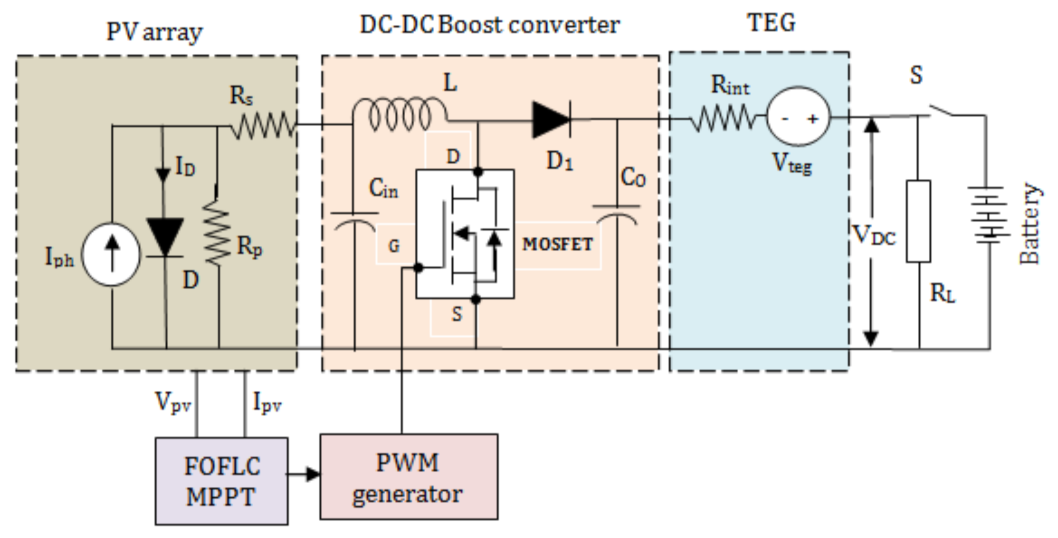

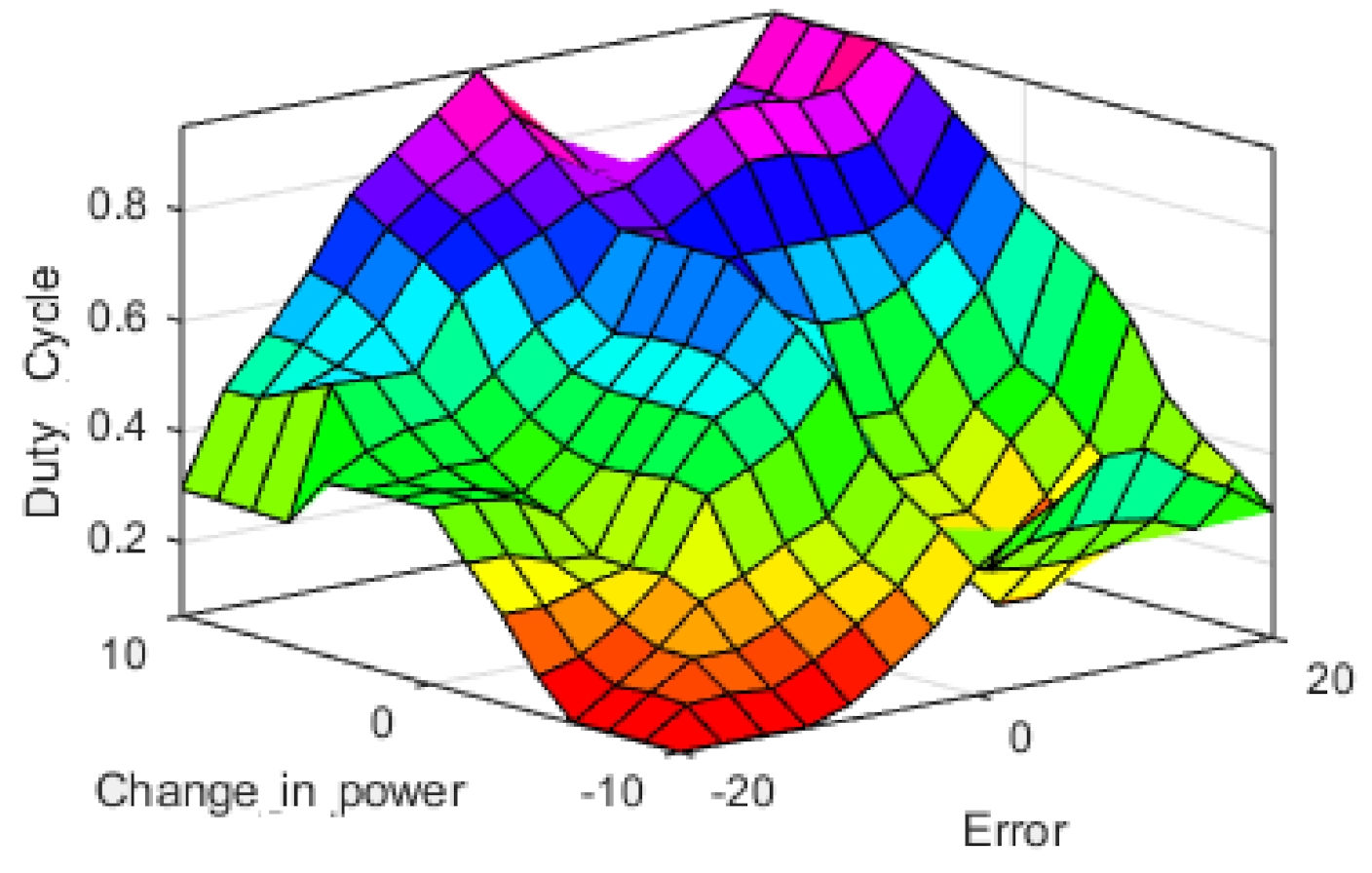
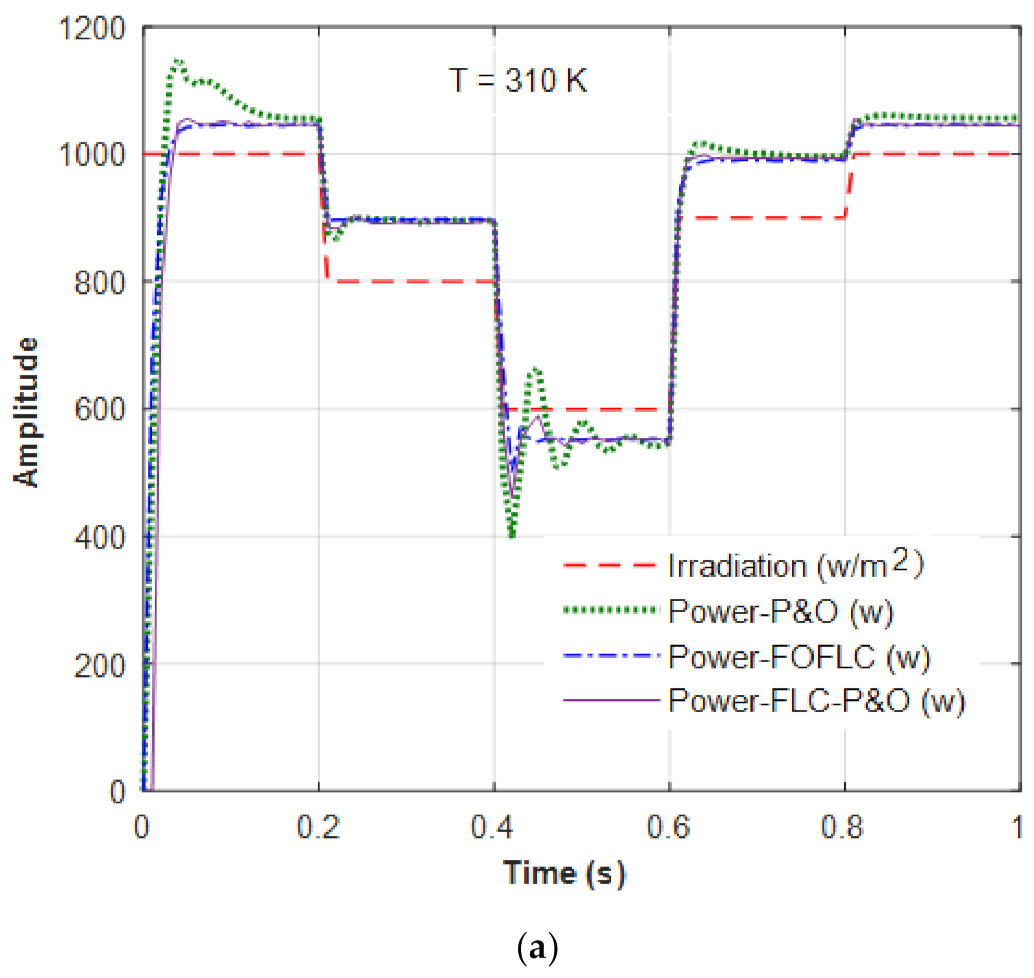
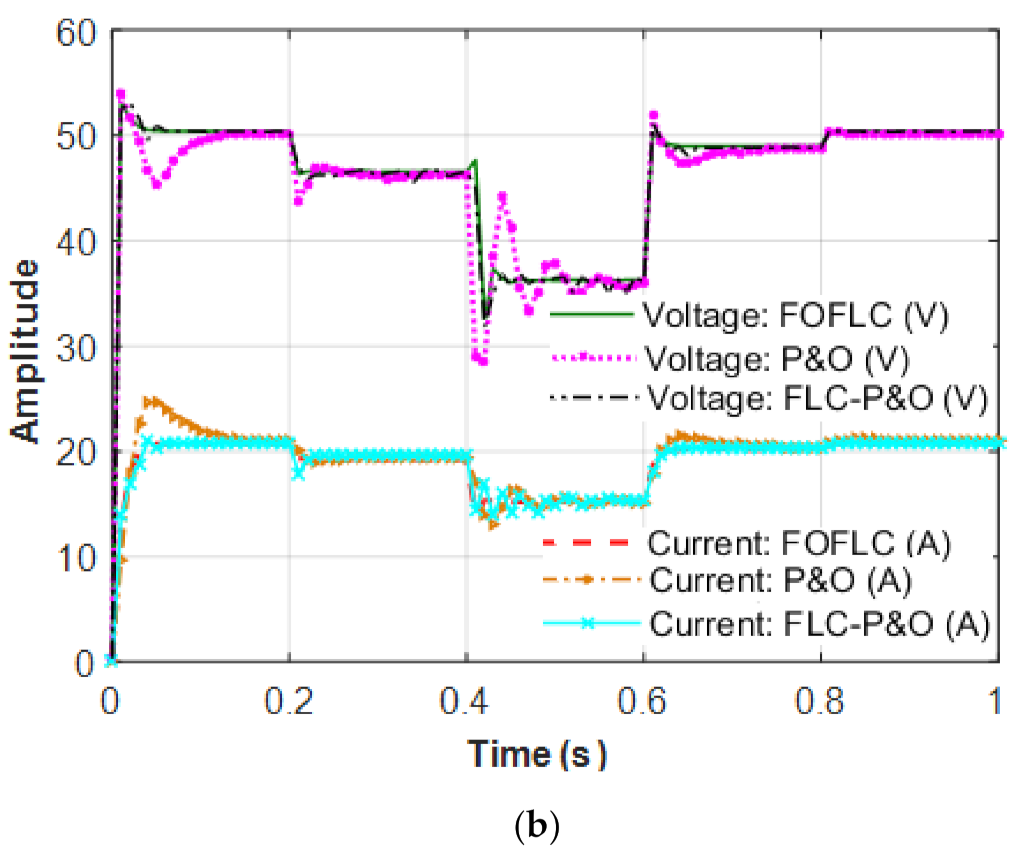
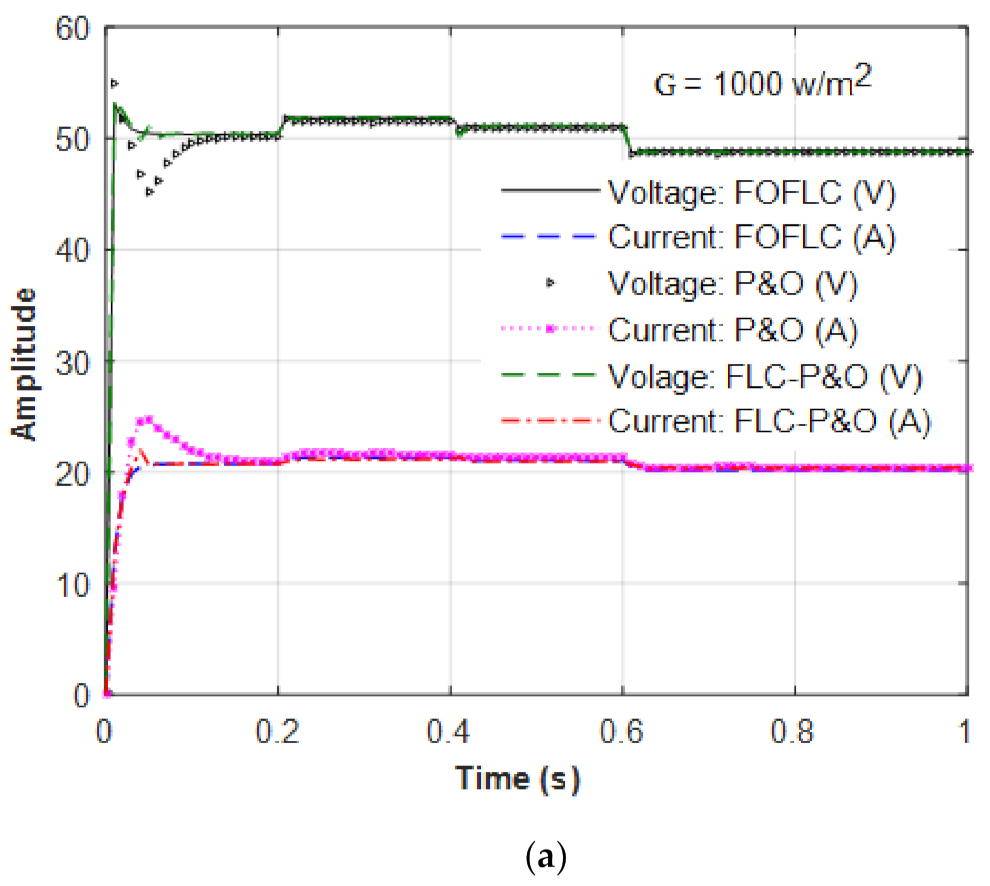
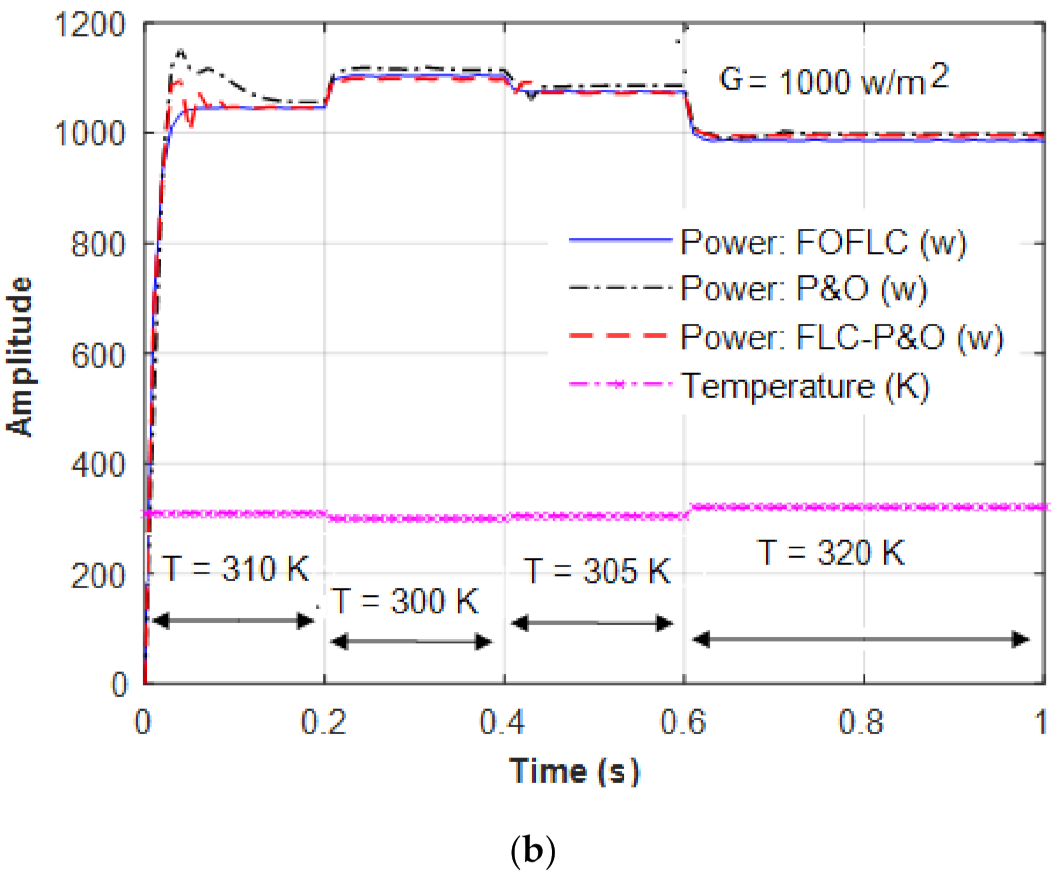
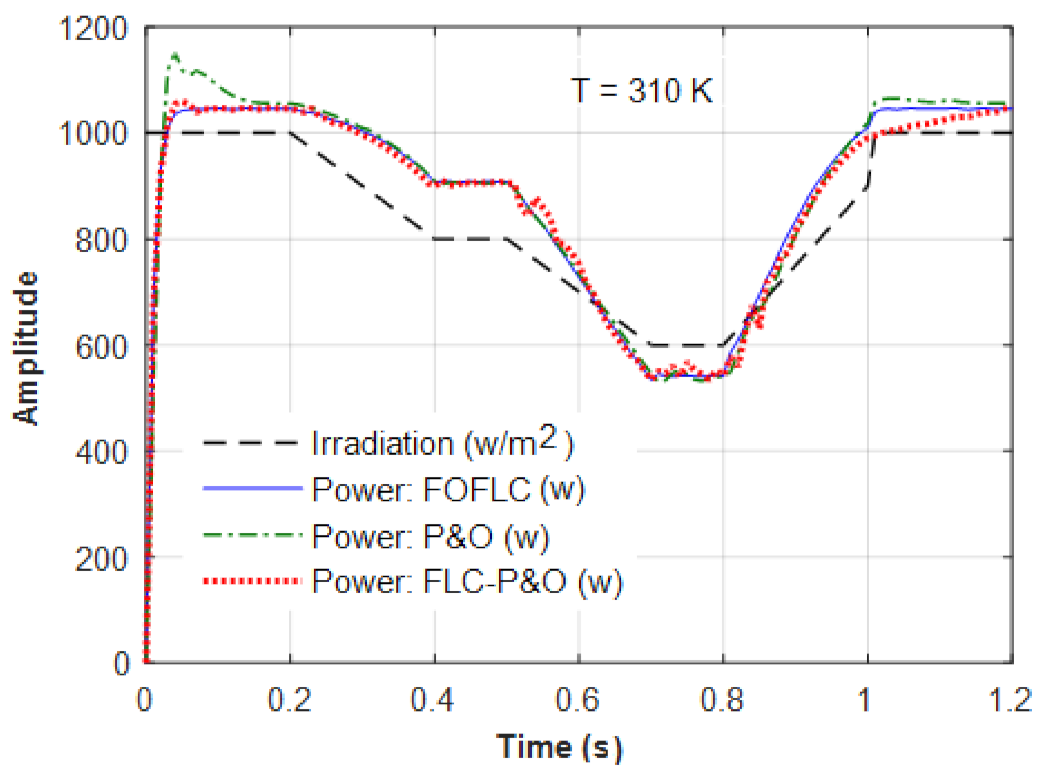
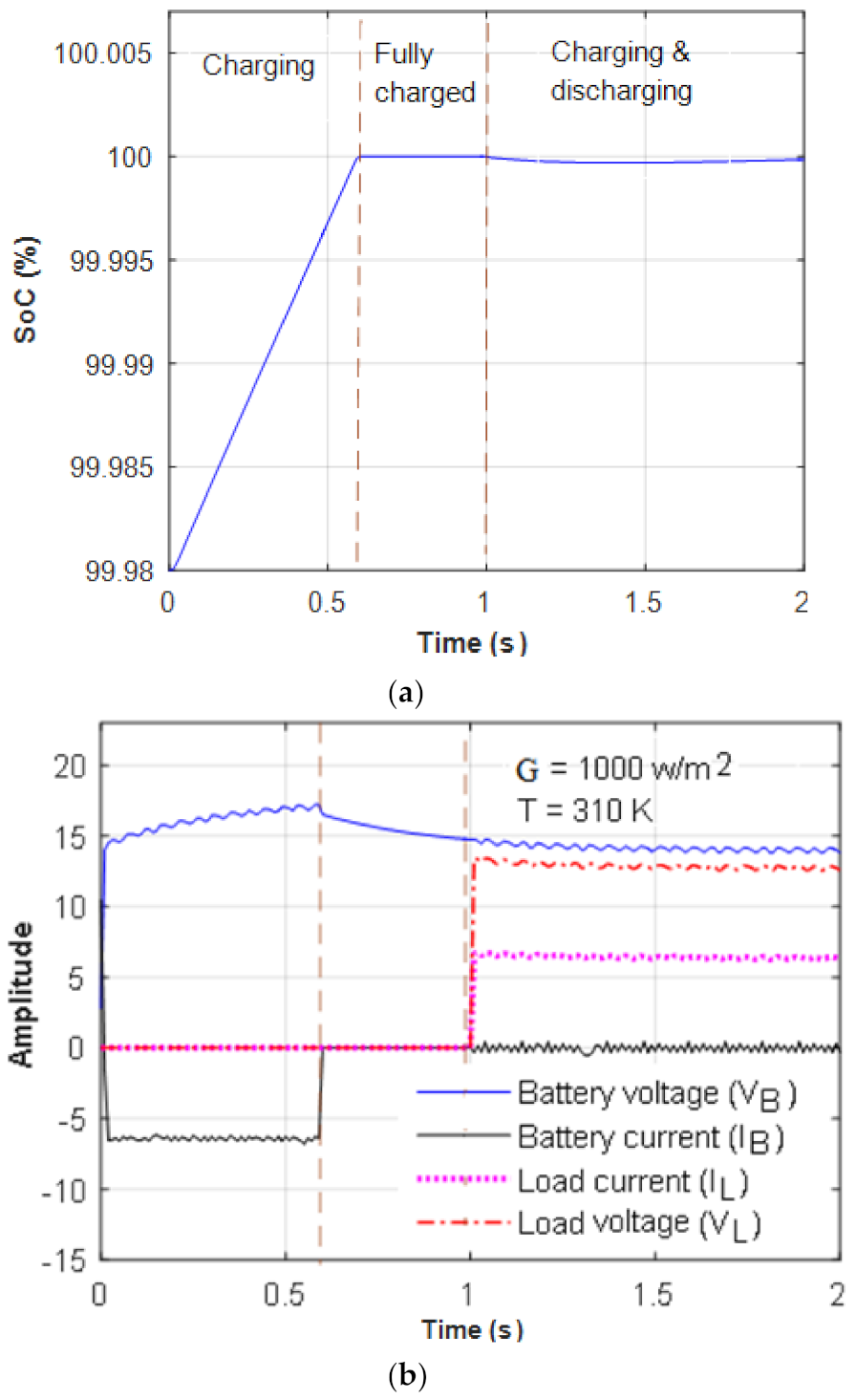
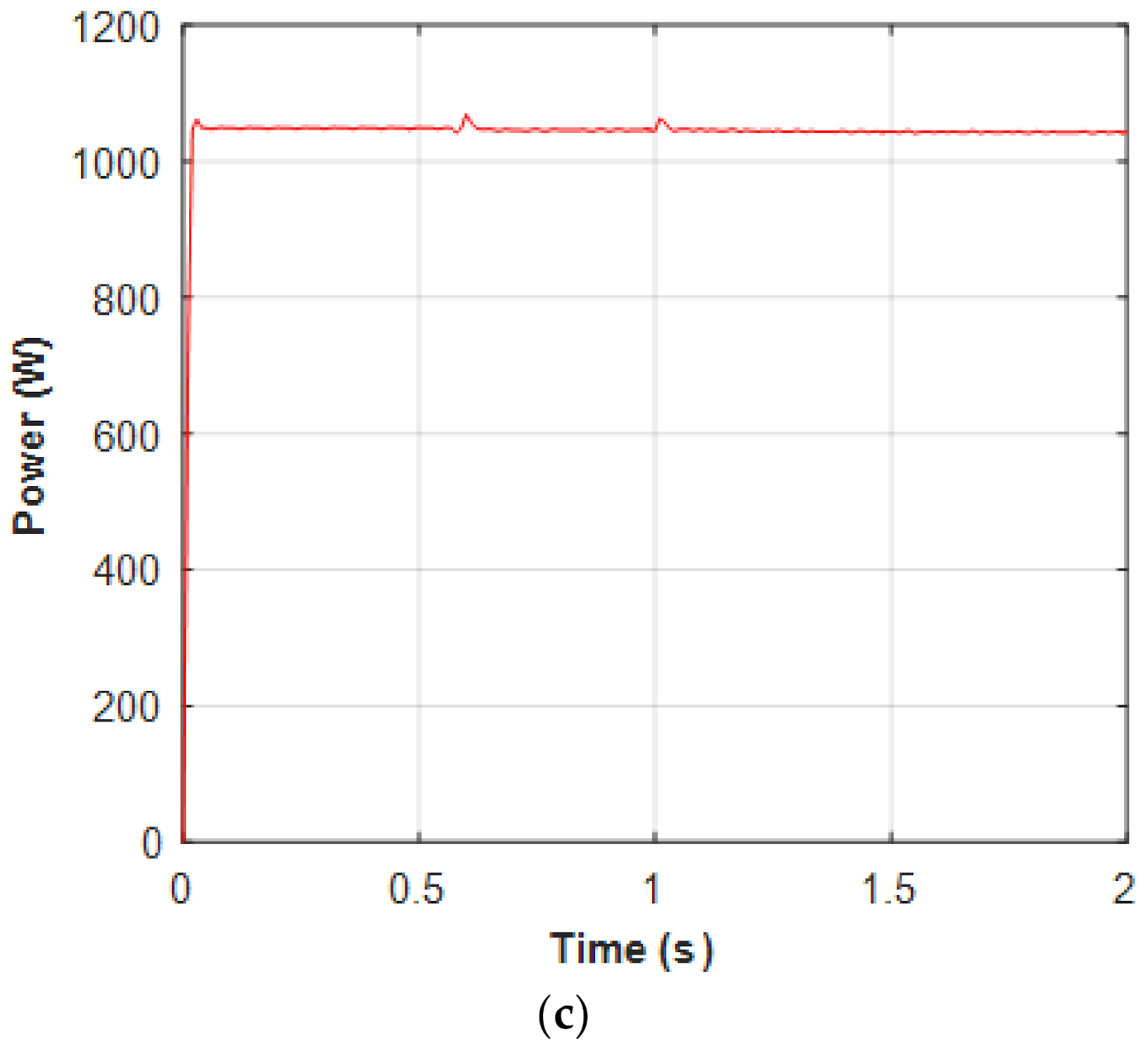
| Specifications | Value (Unit) |
|---|---|
| Peak power voltage | 24.2 V |
| Peak power | 140 W |
| Peak power current | 5.8 A |
| Short Circuit Current | 6.5 A |
| Open circuit voltage | 29 V |
| Area of the solar panel | 1480 mm × 670 mm |
| Number of PV cells | (2 × 4) 8 |
| Parameters | PV Specification | Designed Model | % of Deviation |
|---|---|---|---|
| Peak power voltage (Vmp) | 24.20 V | 23.98 V | 0.92 |
| Peak power current (Imp) | 5.80 A | 5.76 A | 0.69 |
| Maximum power (Pmax) | 140 w | 138.12 w | 1.36 |
| Specifications | Value |
|---|---|
| Length (L) | 1.6 mm |
| Area (A) | 1.4 mm2 |
| Electrical conductivity p-type (σp) | 2.18 × 105 S/m |
| Electrical conductivity n-type (σn) | 0.825 × 105 S/m |
| Thermal conductivity p-type (kp) | 1.44 w/mK |
| Thermal conductivity n-type (kn) | 1.34 w/mK |
| Seebeck coefficient p-type (sp) | 383 µV/K |
| Seebeck coefficient n-type (sn) | −634 µV/K |
| Total Number of thermocouples (Nt) | 110 |
| Parameters | Value |
|---|---|
| Nominal voltage | 15 V |
| Fully charged voltage | 17.5 V |
| Rated capacity | 20 Ah |
| Internal resistance | 0.09 Ω |
| Error e(t) | Change in Power ΔP(t) | Control Action |
|---|---|---|
| Positive | Positive | No change |
| Positive | Negative | Increase PV current |
| Negative | Positive | No change |
| Negative | Negative | Decrease PV current |
| u(t) | e(t) | |||||
|---|---|---|---|---|---|---|
| NH | NL | ZE | PL | PH | ||
| ΔP(t) | NH | VL | VL | LW | ME | LW |
| NL | VL | LW | LW | HG | ME | |
| ZE | LW | LW | HG | ME | HG | |
| PL | ME | ME | HG | VH | VH | |
| PH | HG | HG | VH | VH | VH | |
Publisher’s Note: MDPI stays neutral with regard to jurisdictional claims in published maps and institutional affiliations. |
© 2021 by the author. Licensee MDPI, Basel, Switzerland. This article is an open access article distributed under the terms and conditions of the Creative Commons Attribution (CC BY) license (http://creativecommons.org/licenses/by/4.0/).
Share and Cite
N, K. Photovoltaic and Thermoelectric Generator Combined Hybrid Energy System with an Enhanced Maximum Power Point Tracking Technique for Higher Energy Conversion Efficiency. Sustainability 2021, 13, 3144. https://doi.org/10.3390/su13063144
N K. Photovoltaic and Thermoelectric Generator Combined Hybrid Energy System with an Enhanced Maximum Power Point Tracking Technique for Higher Energy Conversion Efficiency. Sustainability. 2021; 13(6):3144. https://doi.org/10.3390/su13063144
Chicago/Turabian StyleN, Kanagaraj. 2021. "Photovoltaic and Thermoelectric Generator Combined Hybrid Energy System with an Enhanced Maximum Power Point Tracking Technique for Higher Energy Conversion Efficiency" Sustainability 13, no. 6: 3144. https://doi.org/10.3390/su13063144
APA StyleN, K. (2021). Photovoltaic and Thermoelectric Generator Combined Hybrid Energy System with an Enhanced Maximum Power Point Tracking Technique for Higher Energy Conversion Efficiency. Sustainability, 13(6), 3144. https://doi.org/10.3390/su13063144






